Conversion rate, ROI or Customer Acquisition Cost - in the previous two articles in the series titled "Numbers first." we zoomed in on 10 ratios that we believe are important from an eCommerce perspective. In the third and final part of the series, we outline what else you should pay attention to when developing your own online store. Before you start reading, however, check out our earlier posts:
Numbers first. Rates worth analyzing in eCommerce part I
Numbers first. Rates worth analyzing in eCommerce part II
1. Click-Through Rate (CTR)
What does one of the most popular metrics in online marketing have to do with eCommerce? The CTR, or Click-Through Rate (as it's referred to), is a metric that allows you to assess how accurately the audience group to which an eCommerce ad is targeted has been determined. In short, it is used to test the effectiveness of ads (such as paid search in Google Ads or Facebook Ads). Sometimes it is also used to analyze how often our eCommerce is selected for organic traffic. So how to calculate the CTR value for your own promotional activities ?
CTR measures the proportion of clicks on an ad to the number of views. How to interpret the results obtained? A higher ratio indicates that the published content attracts the attention of potential customers and reaches the right audience, thus increasing the chance of additional profit. In summary, CTR indicates whether your ads are "selling."
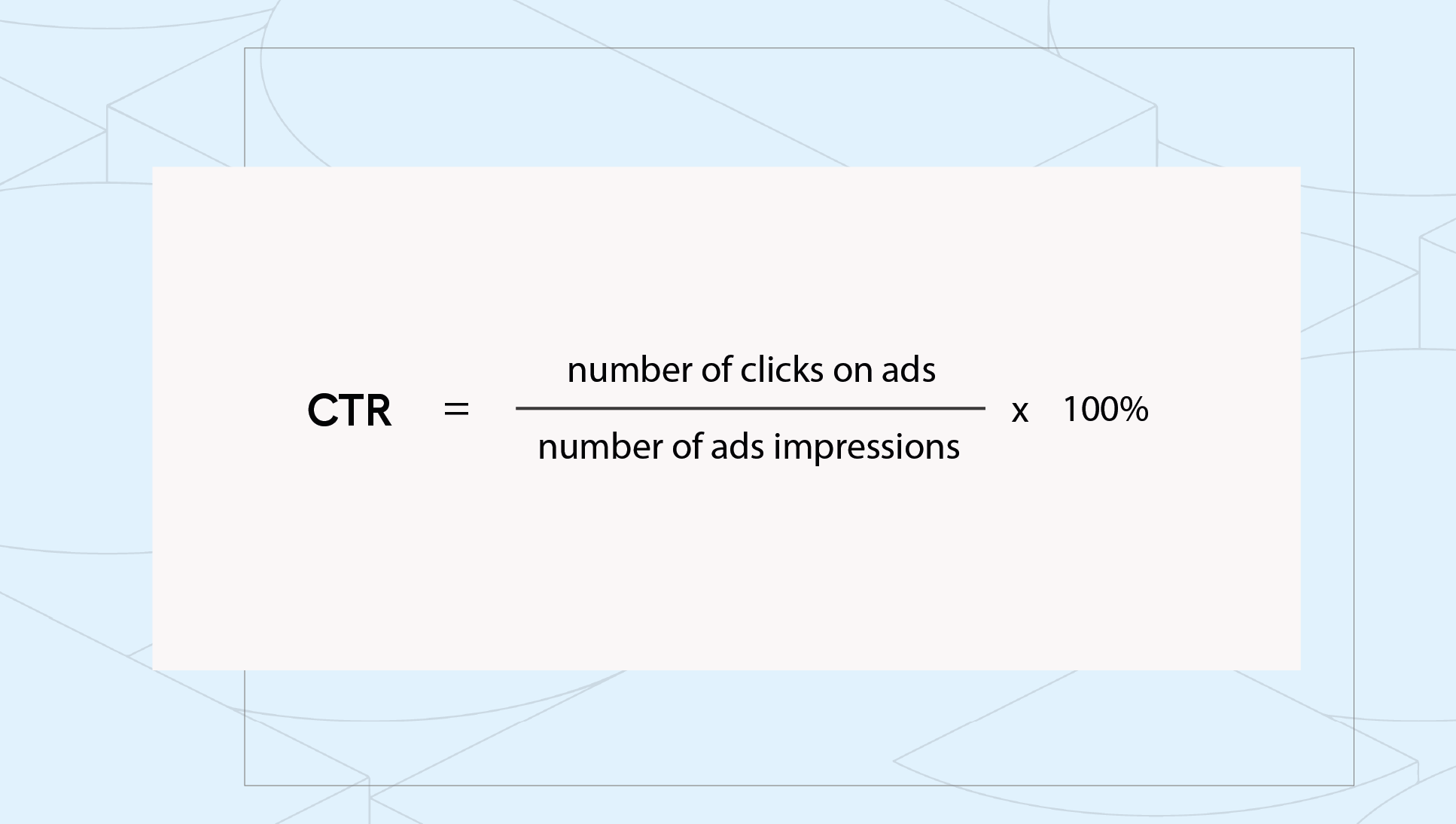
The average Click-Through Rate in AdWords of online stores is just under 3%, but this can vary depending on the specifics of eCommerce. So where should you start your analysis? Depending on the type of ads, it's a good idea to use Google Analytics, a dedicated advertising dashboard (such as Facebook's Ad Manager) or Google Search Console (when studying organic clicks). Next, it's worth considering what goals your ad campaign has. Do you want to increase the number of visits to your website, boost brand awareness, or perhaps promote a new product or service? The industry in which you do e-business and the complexity and price range of your products can also influence the ratio. In the case of more expensive or specialized items, the click-through percentage may be higher than usual, as Internet users often conduct thorough research on the Internet before deciding to purchase such items. How to ensure a high CTR independent of the e-store offer?
- Personalize ad content - a low score may simply indicate that the promoted content is not interesting to the audience. Use different components of the ad (e.g., headlines, CTAs or images) to attract the attention of potential customers,
- Test and measure results - when developing a promotional strategy, it's a good idea to prepare a couple of different versions of the ad. They can differ both in terms of text, placement and the type itself. Such testing will help determine which campaigns work best and which can be eliminated due to poorer results.
- Take care of ad positioning - ads placed at the beginning of search results or at the top are more likely to be clicked on precisely. For smartphone users, the chance of choosing an ad drops by as much as 45% with placement one place lower in the search engine.
In short, the CTR helps to make sure that the advertising budget is targeted to the right audience. A high ratio value, combined with a competitive offer and a properly designed and functioning platform, can be a foreshadowing for increased sales results. It is important to follow up by monitoring the potential customer's behavior on the site, as well as additional metrics such as conversion rate or average order value. This will give you a complete picture of the effectiveness of your efforts.
2. Repeat Customer Rate (RCR)
Orders in your eCommerce store are flowing one after another, but such a scenario does not last long term because buyers do not repeat transactions? Acquiring new customers is necessary to keep eCommerce running smoothly. However, it is only whether they return to the eCommerce store that allows you to build a stable position in the market and reduce the cost of searching for buyers (Customer Acquisition Cost). This is what the Repeat Customer Rate (RCR) is reporting.
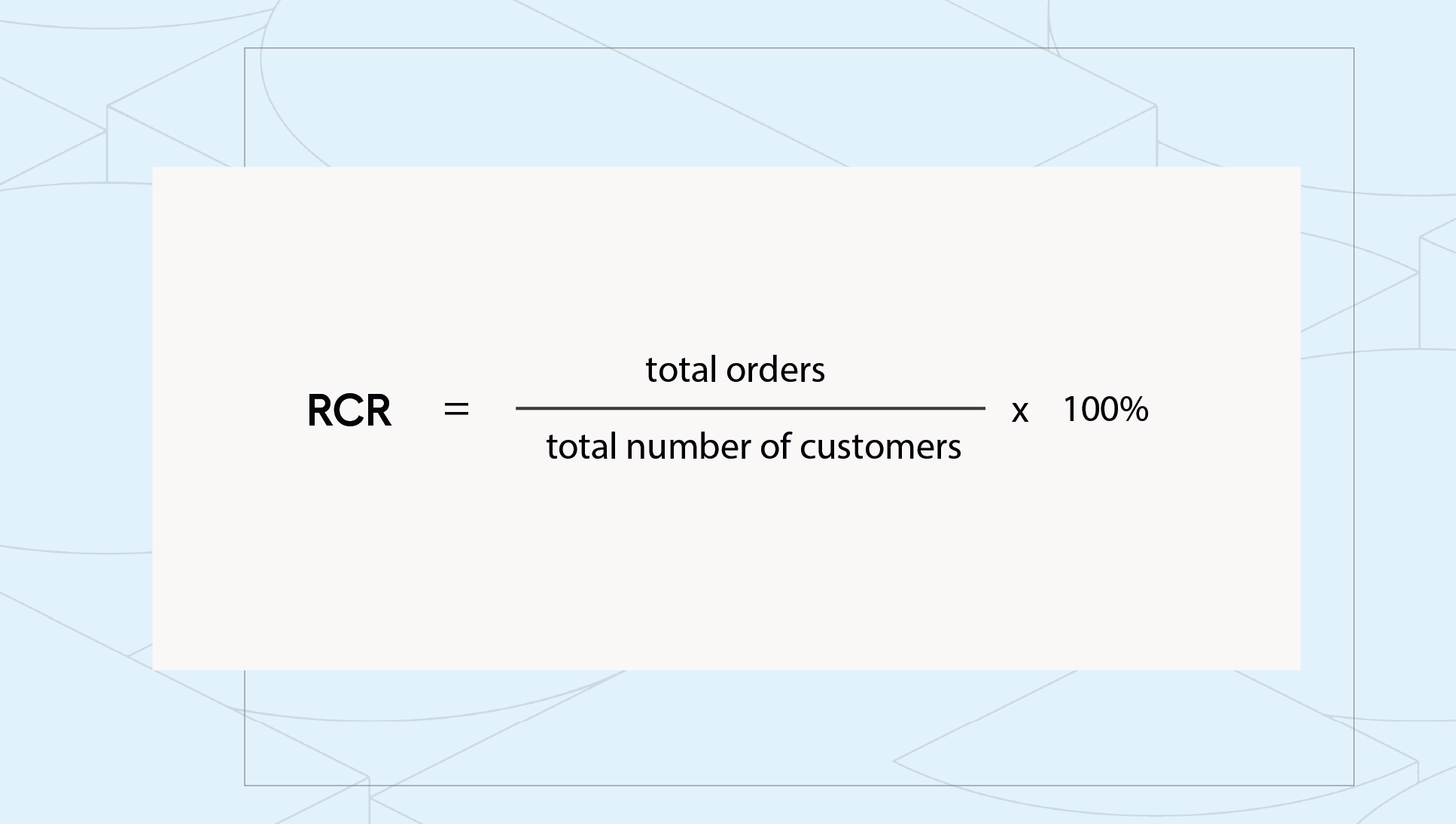
Why is it worth keeping a close eye on the value of this indicator? Market observations show that activities related to maintaining relationships with customers generate 6 times less costs than continuous acquisition of new buyers. A steady customer base also means that customers are attached to the products offered and satisfied with the buying experience, which is a key factor in building long-term relationships for the future. How do you maintain a satisfactory RCR?
The return of shoppers to the e-store will be influenced by such elements as:
- loyalty programs,
- personalized discounts and promotions,
- attractive presentation of offered products or services,
- maintaining contact, e.g. by sending regular newsletters or communicating on social media,
- taking care of the so-called unboxing experience, i.e. attractive packaging of the order.
Increasing competition in the digital market, as well as dynamically changing trends, influence the fact that maintaining long-term relationships with e-consumers is increasingly difficult. When monitoring RCR, it is worth remembering that strong customer relationships do not depend only on technical issues. Today's users (especially representatives of Generation Z and Millenials) pay special attention to whether an online store presents ideas in line with their values, as well as offers "something more: than a shopping experience - if only for this reason, it's worth creating additional content (e.g. eBooks, webinars or newsletters) that will provide customers with valuable information about your company and the industry in which you operate.
3. Sales growth rate
According to PWC forecasts, the value of the Polish eCommerce market will grow to nearly 190 billion zlotys in 2027 (it currently stands at around 120 billion) - such macro-scale research allows us to assess the future of the industry positively. Why not then study similar values on a micro scale, i.e. in relation to your own eCommerce? Analyzing the sales growth rate of an online store allows you to assess its growth prospects.
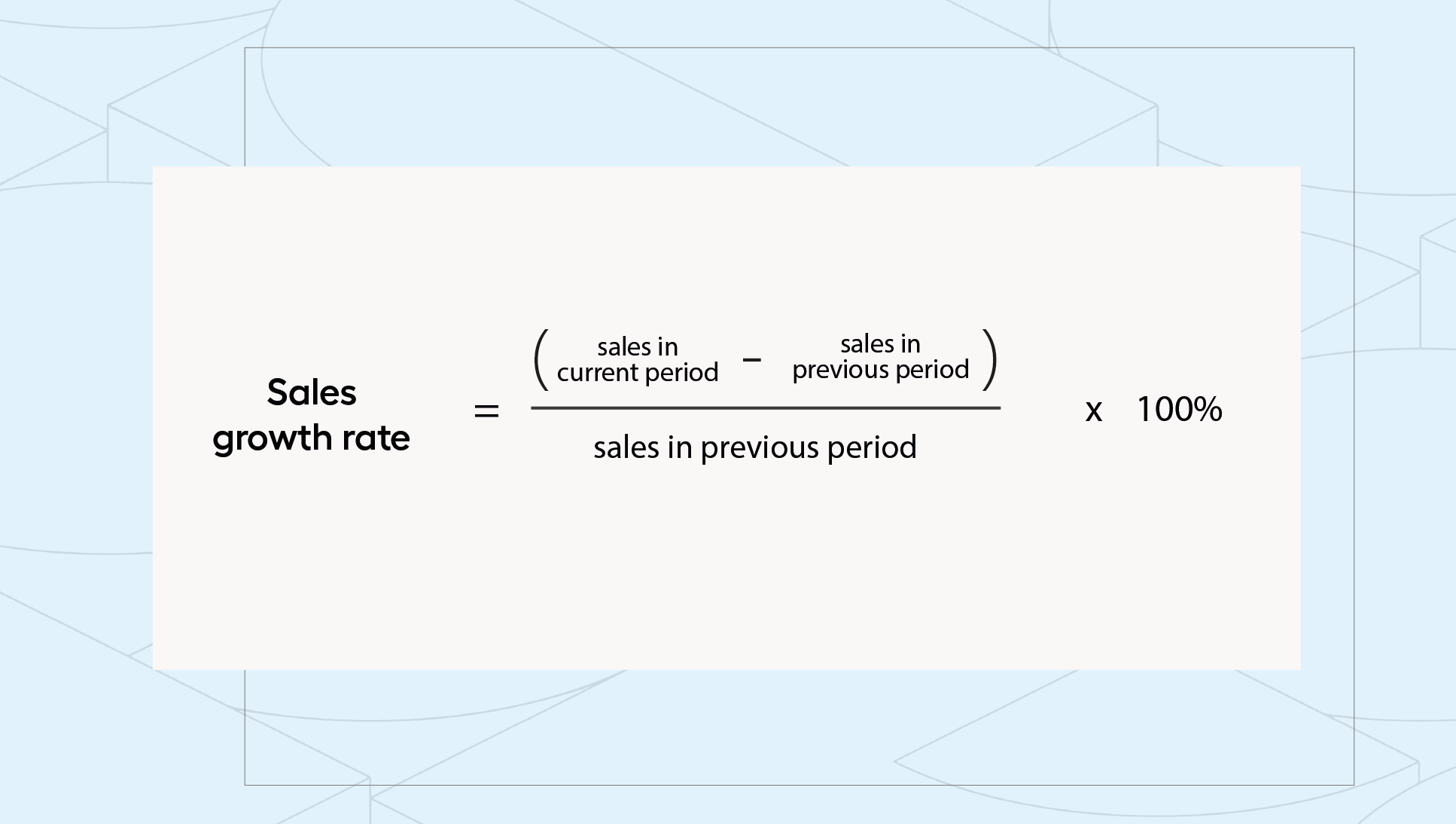
As with the previous indicators, the sales growth rate should not be evaluated in a one-sided manner. Its result depends not only on the specific industry, competition, business strategy or market situation. In times of pandemonium, the number of online store transactions increased globally. By contrast, in 2022, when inflation reached double digits, sales platforms generated lower profits. Periodic changes in sales are also related to factors that can be predicted - customers tend to buy more during so-called sales peaks, or moments such as Black Friday. In such cases, it's worth measuring the pace of sales to set reasonable targets and ensure the smooth operation of the platform from the technical side (and beyond). Among other things, in preparation for a higher number of orders placed should be:
- develop a sales strategy (e.g., pricing policy or scope of promotions),
- check server performance,
- adjust logistics activities (e.g., inventory or catalog of shipping methods).
4. Bounce Rate
Visitors to your store's website for some reason decide to leave it quickly - a situation that no eCommerce owner would like to find himself in. However, it should be expected that it is not possible to completely eliminate such a scenario. Sometimes users simply end up at certain addresses by mistake and, due to misguided expectations, mismatched interface or long loading content, abandon further browsing within seconds. It is accepted that on a daily basis, up to 50% of visitors may leave an online store's site without leaving any interaction. How to monitor such behavior? A useful tool will be the Bounce Rate, the formula for which is shown below.
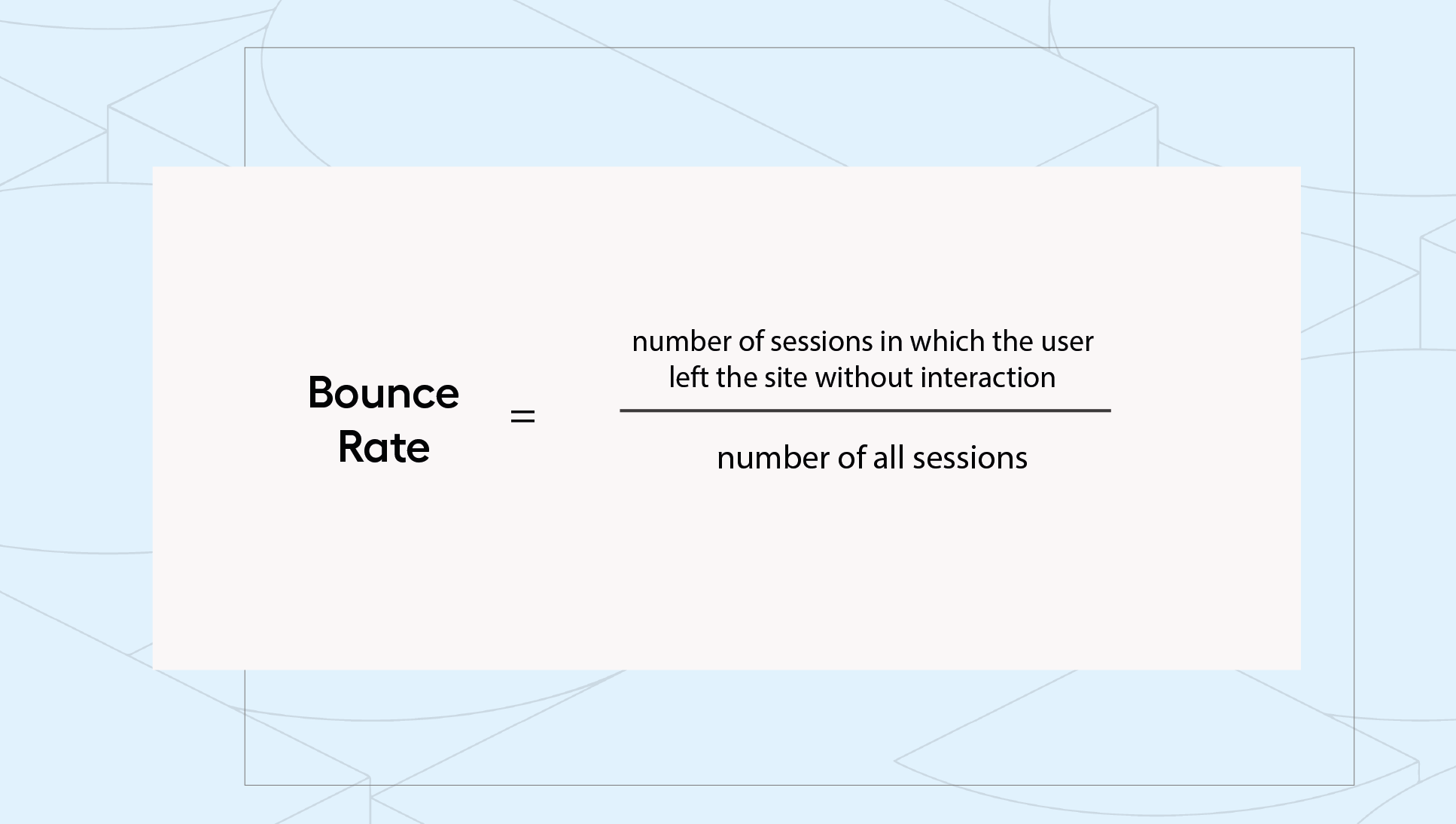
The desired Bounce Rate for eCommerce should be as low as possible, but on average it is between 20 and 40 percent. If your eCommerce site scores significantly higher, it could mean that there are probably errors in the site's performance or it is not fully appealing to the target audience. To reduce the Bounce Rate, you should specifically focus on the first 10-30 seconds of a user's interaction with the platform. Understanding customers' needs and preferences is the first step in meeting their expectations. It's worth focusing on both technical aspects and design to give the viewer the best possible first impression. A clear layout of the platform and quick access to its various elements (such as a shopping cart) will reduce the risk of visitors "bouncing" off the site.
A high rejection rate is a signal to carefully analyze the actions taken, but its value alone is not enough to fully assess the effectiveness of eCommerce. Why? Because it does not check the behavior of users who decided to stay on the site. The quality of this time can be indicated by such indicators as, for example, the depth of scrolling or the number of minutes spent browsing each tab. That's why in the latest version of Google Analytics (GA4) you'll find information about Engagement Rate in opposition to Bounce Rate.
5. Pageviews Per User
Having read all the articles in the series on indicators relevant to eCommerce, you have already had a chance to learn about 14 of them. It's time to take a closer look at the last of the selected ratios, namely PPU. What is behind this shortcut?
PPU, or Pageviews Per User, allows you to measure the number of pages visited by a user during a single session. Analyzing the results allows you to understand how users are interacting with the site and how many resources they have to go through to find the product they are interested in. A higher PPU value may suggest that users are engaging with the content on the site (e.g., viewing multiple product pages), which may lead to a higher chance of making a purchase. A lower value, on the other hand, may suggest that there are problems with the site's user experience or that the offer itself is not properly tailored.
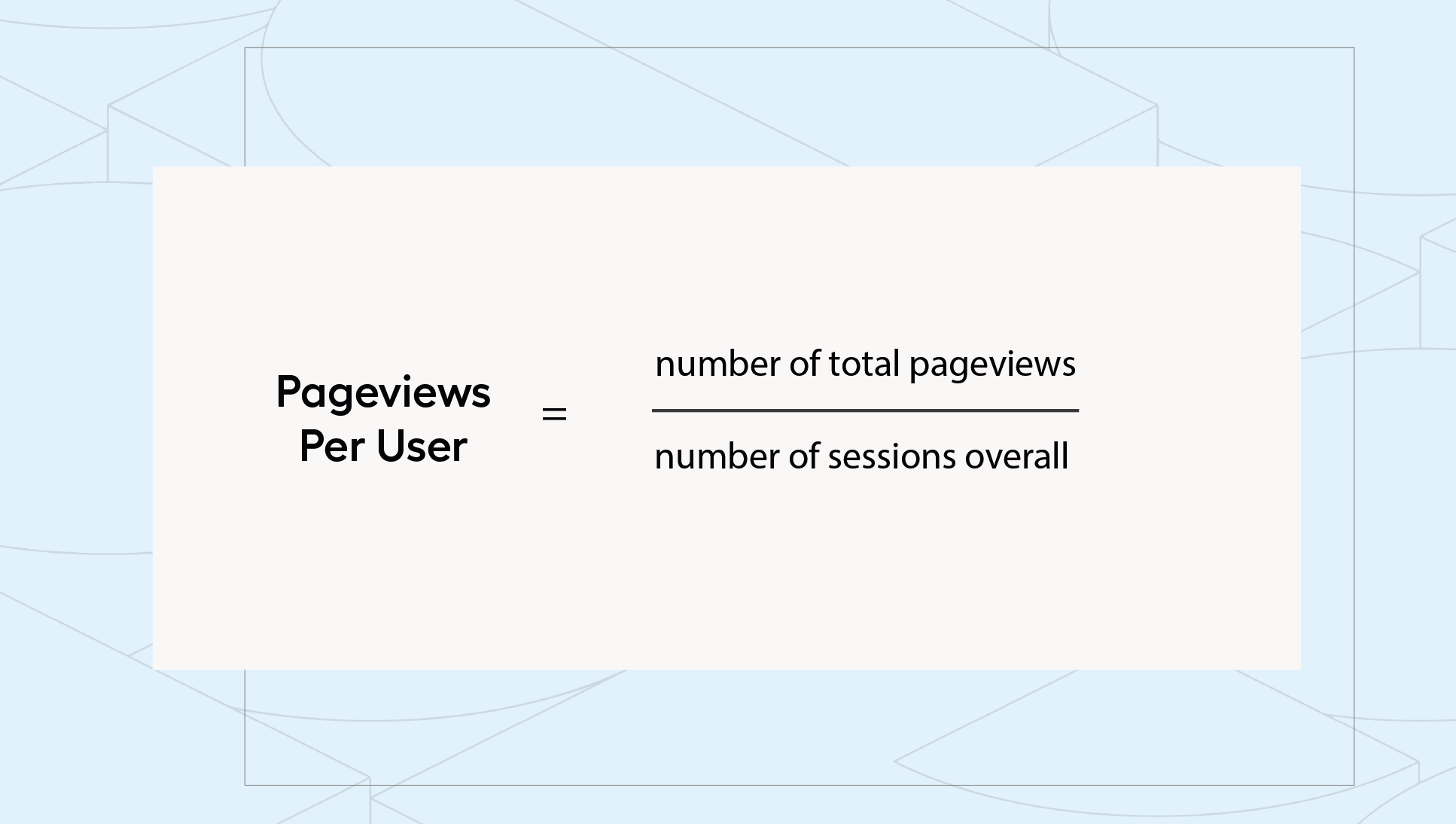
To improve the Pageviews Per User value of an online store, several strategies can be employed. One solution is, mentioned earlier, to improve site navigation. It will also be a good practice to increase the number of related products or to expand the descriptions with additional information, as well as to create interesting content (e.g. on the company's blog) and at the same time use linking within the platform. It is much more likely that a potential customer will open the tabs that are visible in his sight than if he had to find them on his own (even if the site navigation is properly designed).
In the era of the qcommerce (quick shopping) trend, a high value of the indicator will not always be read positively - many consumers want to find the products they need, add them to their shopping cart and finalize the transaction in just a few clicks. If you know that the vast majority of your shoppers expect just such an experience, it's worth considering implementing one-step check out solutions that minimize the effort required to place an order.
A jakie są perspektywy na przyszłość Twojego eCommerce?
Knowing your performance indicators is useful knowledge that will help you streamline your sales processes and improve your customers' buying experience. In this series of articles, we've outlined 15 metrics you should study as you develop your e-business. Although you'll find all three entries under the title "Numbers first.", keep in mind that there is more to success in the world of eCommerce than just numbers - the impact of understanding your industry and your customers' needs is paramount to achieving your goals. Therefore, when analyzing ratio results, always look at them from the perspective of the individual specifics of your own business - in line with the idea of "eCommerce first."



